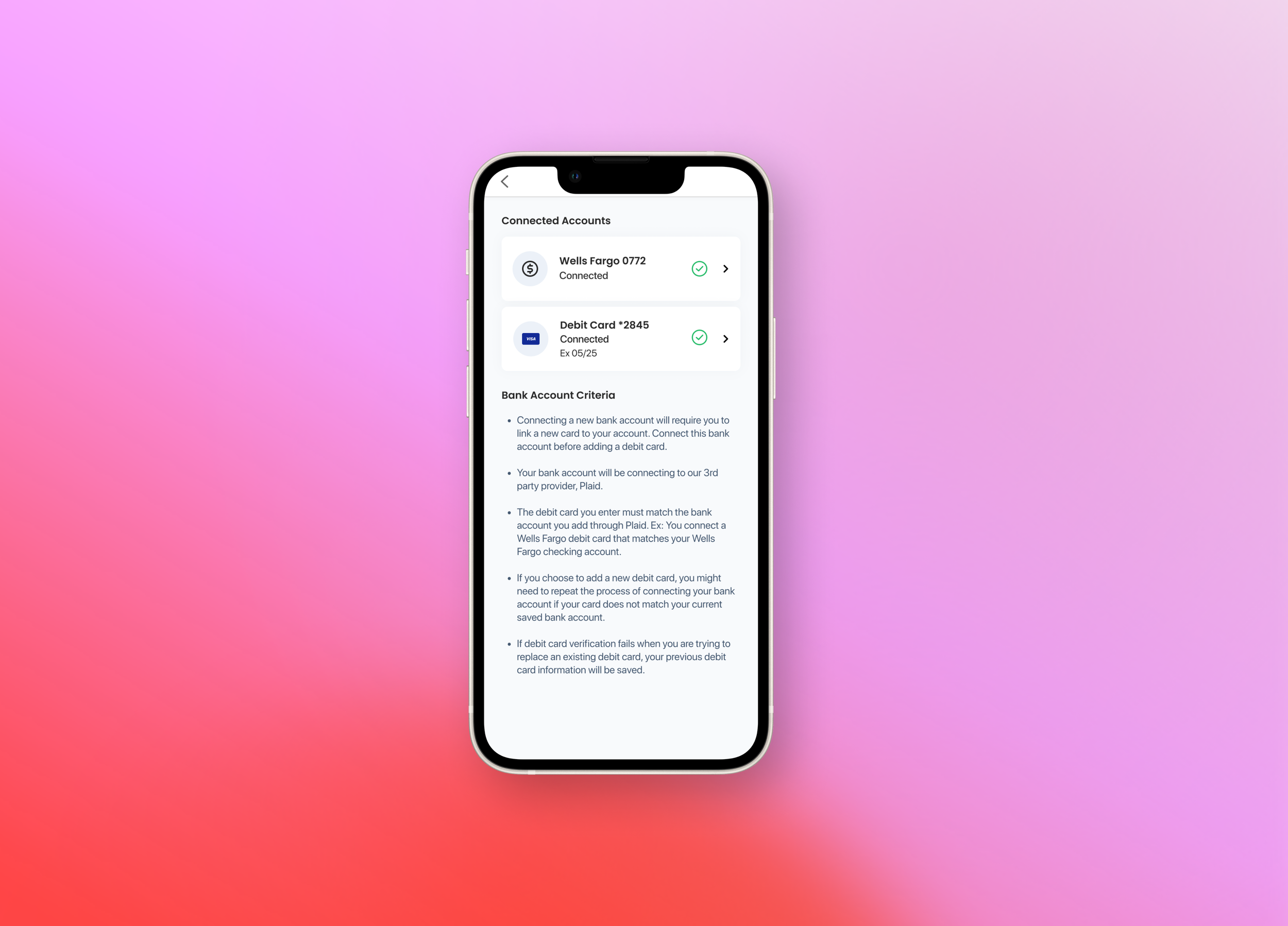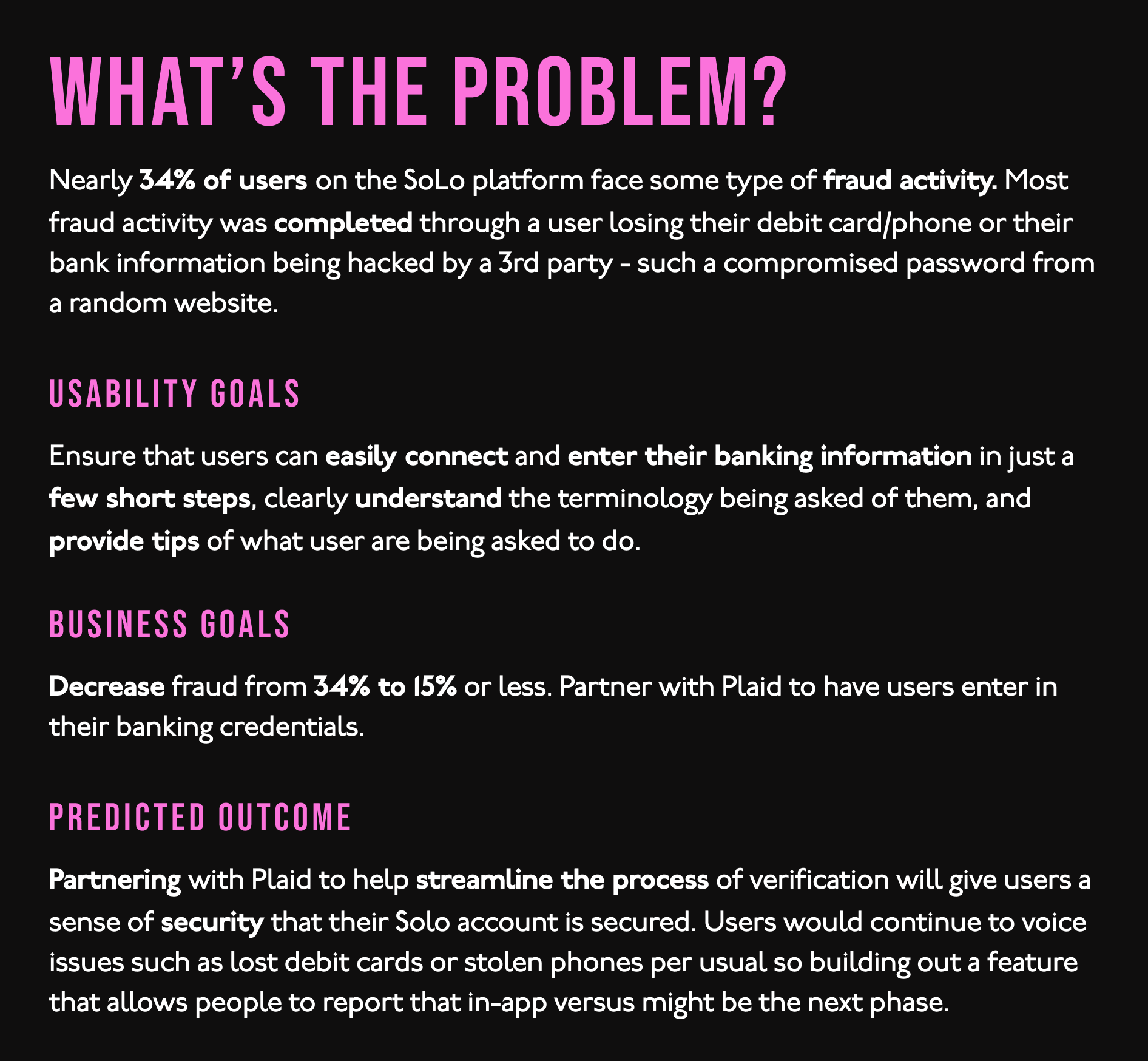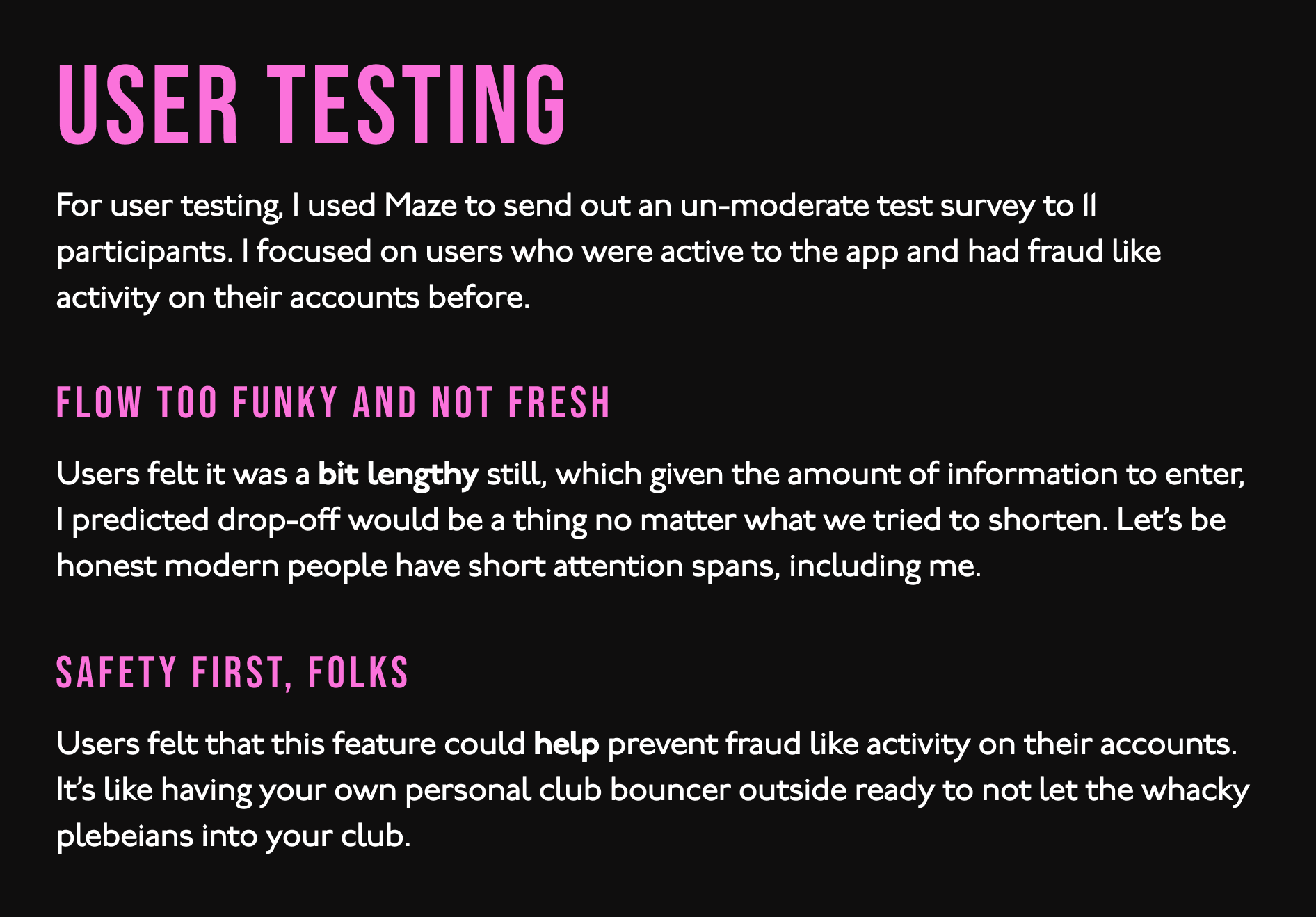SoLo Funds: Debit Card Verification
SoLo Funds is a peer-to-peer microlending native app where a user can request loans that are funded by the public. SoLo Funds Debit Card Verification was a new feature for SoLo to help prevent fraud activity amongst the user base. SoLo partnered with 3rd party platform, Plaid to let users connect their banking credentials. This is some deep thinking, technical shit, folks.
Solo Funds app is available on the Apple App Store and Google Play Store
Role ——
Lead Product Designer | UX Researcher | UX Copywriting
Duration Length ——
6.5 Months (Apr 2022 - Oct 2022)
Launched ——
July 2022
Responsibilities ——
Work with Data Scientists and PMs to compile user metrics/research, define scoping and requirements, understand feasibility from Engineers, work with a marketing copywriter to write though copy for users to understand. Design UX wireframes/high-fi screens. Document flows within Figma for handoffs.
Cookin’ up the UX flows
Leveraging the research in hand via Maze surveys and customer complaints, I continued to work with my PM to understand user stories and metrics to piece together some wireframes. I collaborated with data scientists and one product manager to gather information for dashboard program, Looker.
This feature was technically complex due to integration with a third-party platform and extensive backend API calls. I designed separate flows for three user types: Power Lenders (trusted users who bypassed Plaid), new users, and current Borrowers. Most fraud concerns involved new users. Multiple entry points for users to enter their information were created across Settings, Wallet, and Marketplace.
UI Design & User Testing
After confirming with Engineers and my PM, I was able to translate the wireframes into high-fi screens. With these screens I was able to explore the option of messaging to the user base, notifying the users where in the process they were, how drop-offs would work if a user chose that process, what does the UI look for the difference between the Power Lenders versus everyone else.
I leveraged the SoLo Funds Design System to build out my screens for this feature.












